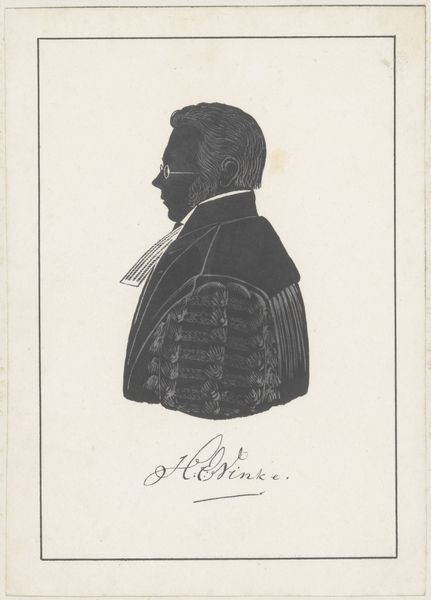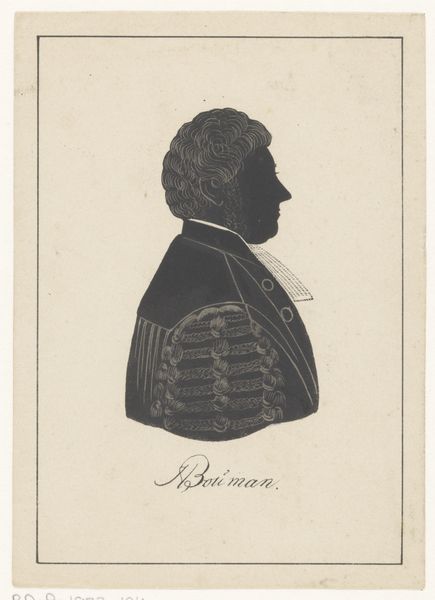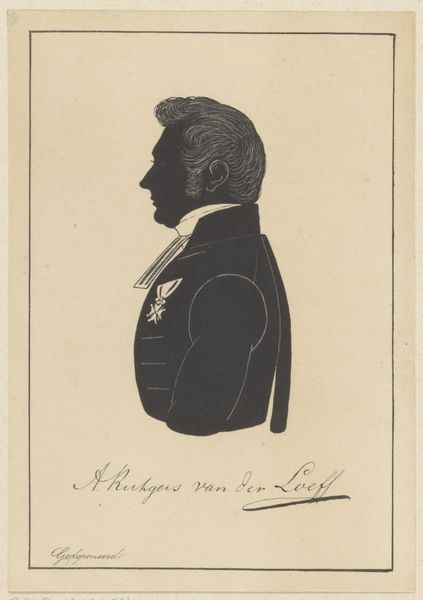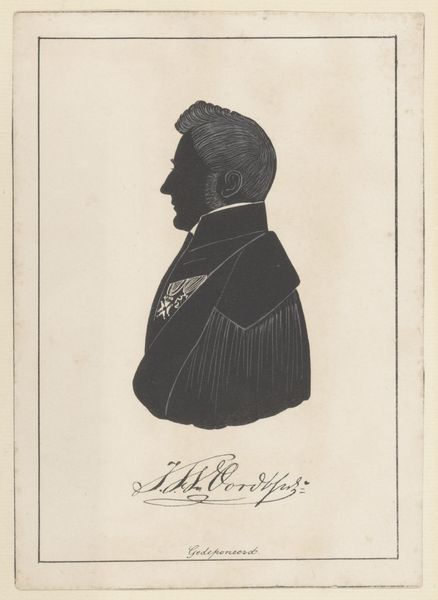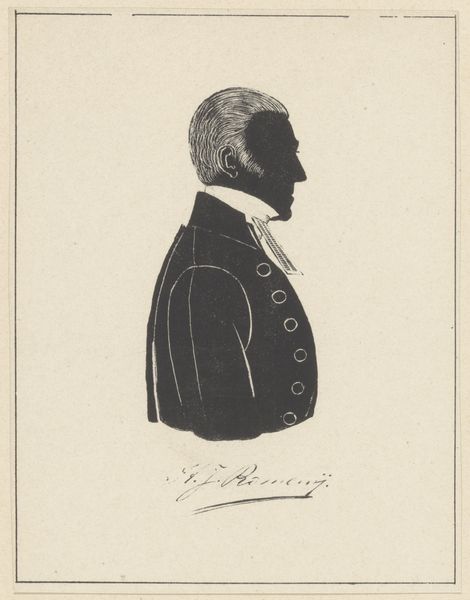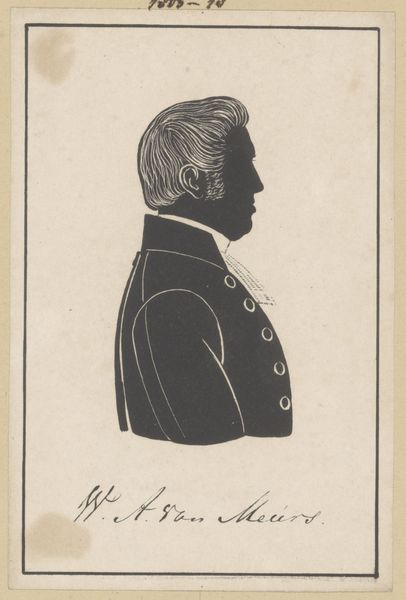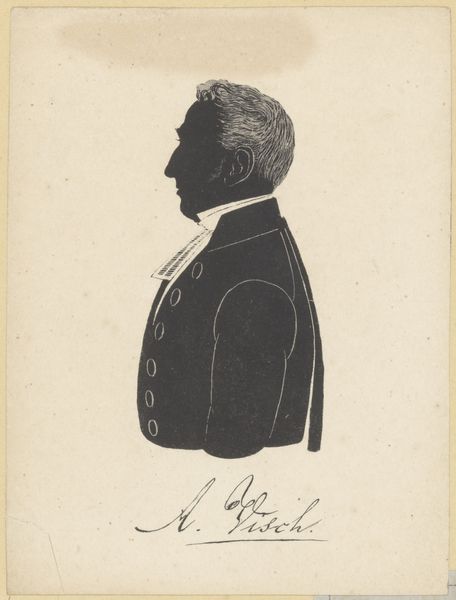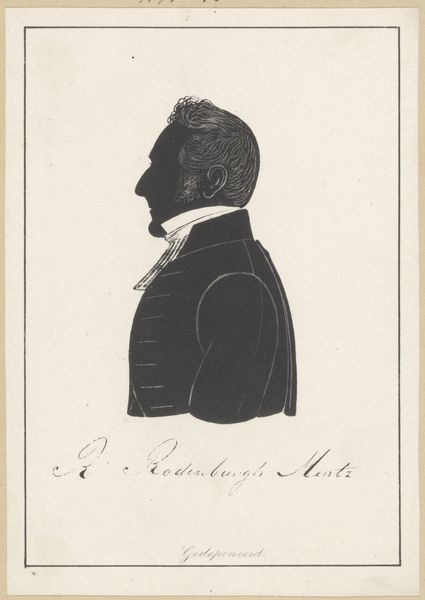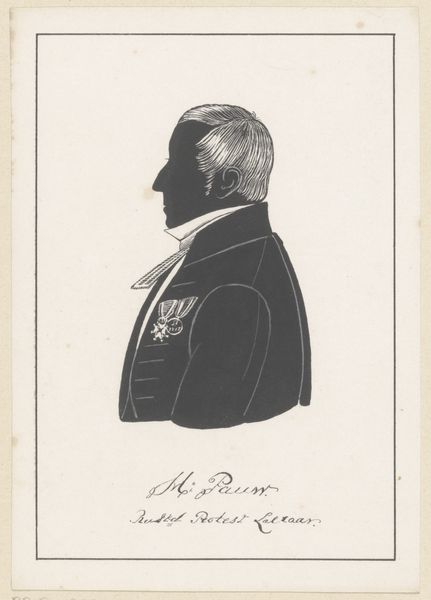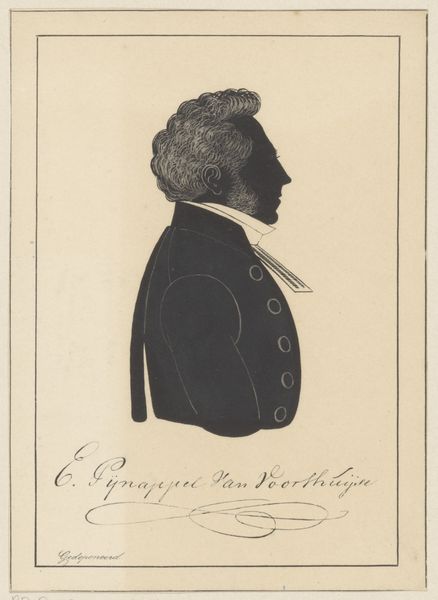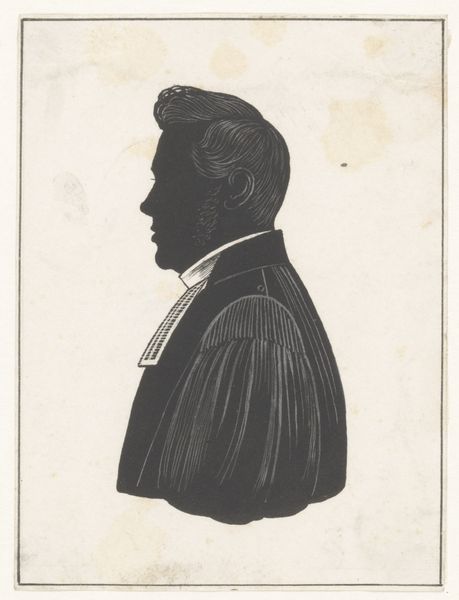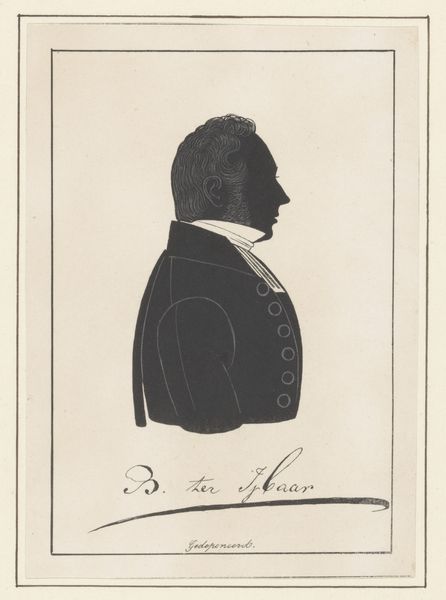
drawing, graphite
#
portrait
#
drawing
#
form
#
line
#
graphite
Dimensions: height 155 mm, width 111 mm
Copyright: Rijks Museum: Open Domain
Editor: This is "Silhouette Portrait of Herman Johan Royaards" by Pieter Barbiers IV, dating from somewhere between 1809 and 1848. It's a graphite drawing, quite striking. The stark contrast of the silhouette makes the subject stand out, but the detail in the uniform is fascinating. What do you see when you look at this? Curator: I'm drawn to the *process* of silhouette making, the means of production, if you will. Consider the societal function it served: providing accessible portraits for a burgeoning middle class who could not necessarily afford painted portraiture. How does this accessibility shape our understanding of portraiture, moving it away from solely aristocratic display? Editor: That's a great point, I never thought about the democratizing effect of silhouettes. The subject’s status feels... performative here. Curator: Exactly. How does the labor involved in crafting this silhouette – the precise cutting or careful graphite work – relate to the labor Herman Johan Royaards likely performed as suggested by the trappings of his uniform? Are we seeing a constructed image that’s as much about material realities as it is about personal representation? Editor: So, you’re thinking about how the *making* of the artwork speaks to broader social structures and possibly challenges conventional boundaries of fine art. I mean it's "just" a silhouette but communicates so much about class. Curator: Precisely. By focusing on materiality, we can read this seemingly simple portrait as a complex intersection of labor, status, and artistic production, and then begin to consider where the status of labor rests between art and sitter. How interesting is that? Editor: Absolutely! Looking at it through the lens of material conditions makes it far more insightful than just seeing a portrait. Thanks!
Comments
No comments
Be the first to comment and join the conversation on the ultimate creative platform.
